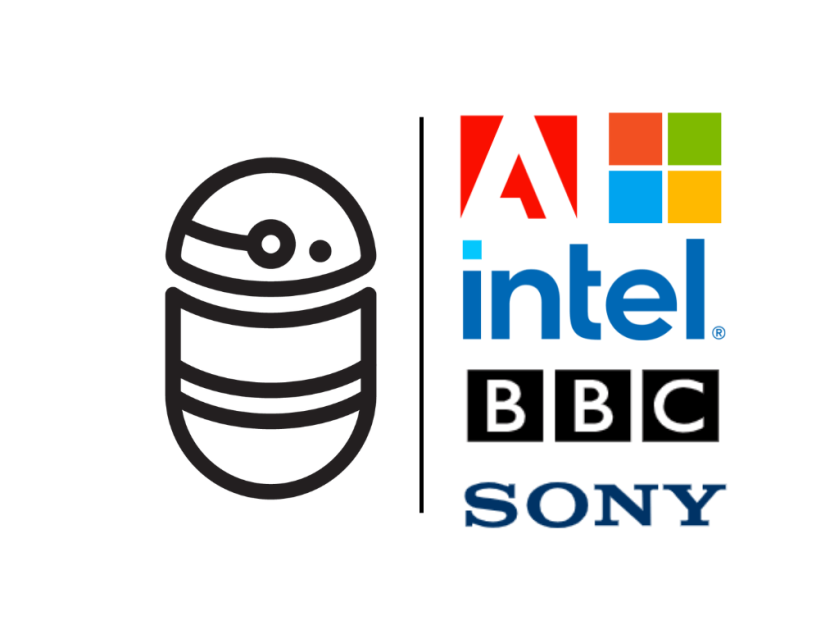Both TikTok and Google recently joined an initiative comprised of leading content publishers and generators designed to make changes to images and other content easily accessible through a file system of permanent digital signatures.
The Content Authenticity Initiative (CAI), an association founded by Adobe, The New York Times and Twitter in November 2019, promotes an industry standard for content provenance (i.e. origination) that makes changes easy to see.
The standard is defined by C2PA, an open technical standard providing publishers, creators, and consumers the ability to readily trace the origin of different types of digital media. CAI cites curbing disinformation as a motivation for its activities
New Member
On April 24th President Biden signed a law that requires TikTok’s parent, Chinese-owned Byte Dance, sell the popular video platform within a year or be banned in the U.S. TikTok. On May 9th TikTok announced that it had joined CAI. CAI is “partnering with the Coalition for Content Provenance and Authenticity (C2PA) and becomes the first video sharing platform to implement their Content Credentials technology.”
Twitter/X departed CAI after Elon Musk purchased the company, reports IEEE Spectrum.

The original photo, image, video, music or written work, whatever its original intention, may have evolved. It is an important starting point in determining its use and ultimately how its owner or assignee should be compensated.
Provenance Implies Use
Does a business or individual have the right to alter a work for a particular purpose, such as a new work based on the original or to use it for profit? This does not appear to be the current mission of CAI, which stops short of suggesting infringement or IP ownership in determining provenance. To me it seems difficult to discuss one without the other.
It’s terrific – no fantastic – that a system for digital provenance is being used by major content providers and that CAI is informing the public about its relevance. Transparency associated with provenance can prevent fakes and track both authorized and unauthorized alterations.
But if the history of a copyrighted work or creative expression can be traced back to its original, so can it’s use and value. Large content providers like The New York Times, BBC, and Google will appreciate the opportunity to know who is adapting or otherwise using their assets, how and if their owners’ intellectual property is being infringed.
Potential licensing is the elephant in the room. Elephants never forget.
Patents, Too?
The ability to track provenance also may have implications for patented inventions. The technology is here to match claims with invention use and value. Whether the potential licensees and the courts choose to respect the findings or see them as conclusive is another matter.
CAI and standardization of traceable provenance is a major step to a more orderly copyright universe – one that continues to expanding rapidly and has been, and will continue to be, impacted significantly by generative AI. While image, video and music authentication and greater transparency have not yet offered much about solving the licensing conundrum, perhaps they will. Like music copyright licenses, they could lead to classes of licenses whose royalty rates vary based on value, context and type of user.
The C2PA lays out the technical standards for digital provenance while the Content Authenticity Initiative (CAI) builds open-source tools based on the C2PA standards. The CAI’s cross-industry community is committed to adopting and advancing the movement to restore trust and transparency online.
According to a statement from CAI, “Google [and now TikTok] will collaborate with other steering committee members, Adobe, The BBC, Intel, Microsoft, Publicis Groupe, Sony, OpenAI and Truepic, to develop the technical standard for Content Credentials while also actively exploring how to incorporate Content Credentials into its own products and services in the future.
“Google, whose work in artificial intelligence helped make A.I.-generated content far easier to create and spread,” reported The New York Times in February, “now wants to ensure that such content is traceable as well.
Digital Nutrition Label
“The tech giant said that it was joining an effort to develop credentials for digital content, a sort of ‘nutrition label’ that identifies when and how a photograph, a video, an audio clip or another file was produced or altered — including with A.I.”
CAI members include more than 200 businesses. In addition to the three founding members Adobe, The New York Times and Twitter, they include arm, BBC, Microsoft, Nikon, Qualcomm and The Washington Post.
Leica, one of the world’s leading camera and lens makers, introduced in the 4Q of 2023 the first camera with digital provenance built in to the images it creates.
Image source: onmsft.com; contentauthenticity.org

